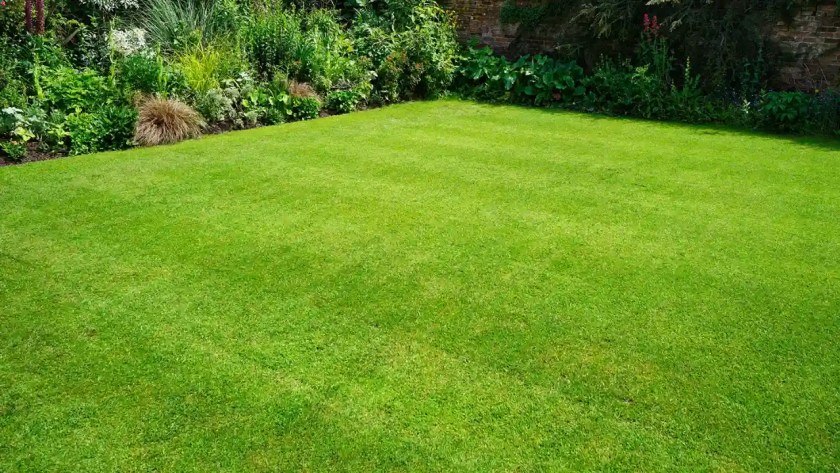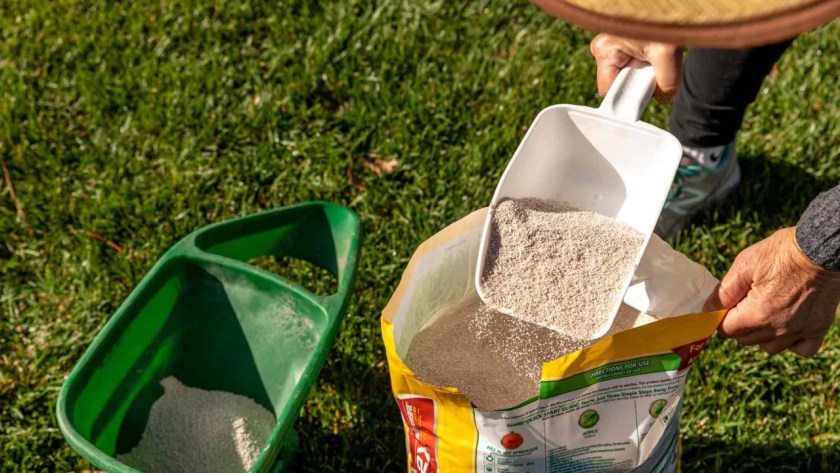If you’re looking to achieve that lush and green lawn year-round, scarifying your lawn should be part of your maintenance plan.
Scarifying your lawn may lead to a healthier lawn, but the immediate effects of scarifying- just like the first part of the word scarifying- could be scary. So, naturally, you are going to want to get the lawn to recover quickly after scarifying.
What you need to keep in mind is that timing is everything. If you scarify your lawn when it is sunny and warm, with a little bit of rain, it will help speed up the lawn’s recovery period after scarifying.
This is why scarifying your lawn in the autumn/fall is the best time. Other than that, there are things that you can do to help speed up the process too.
What you will learn- In this article we will highlight the steps you should be taking to revive a lawn after scarifying, but first, let’s explore why you need to scarify your lawn every once a year or so.
How Does Scarifying Contribute to A Healthy Lawn?

As time goes by, you will find that thatch and moss have built up around a lawn and that it is difficult for green grass to grow and flourish and that this often results in a spongy lawn that is unhealthy.
This is where scarifying is useful. Gardeners or lawn owners scarify to remove the build up of thatch and dead moss at the surface of the lawn.
Thatch, dead moss, and weeds all have negative impacts on a lawn:
- To start off, they actually suffocate new and healthy grass shoots, making it hard for the grass to emerge from the soil.
- Secondly, they prevent nutrients and water from seamlessly getting to and, penetrating the soil. The build-up of thatch and dead moss also creates an environment that encourages diseases of the grass like mold and the occurrence of pests and their (sometimes) larvae.
- Finally, scarifying helps prevent the above from occurring and thus keep your lawn looking as nice and lovely as you would desire. But as we have said above, scarifying can also defeat the desired aesthetics that we want our lawn to have in the immediate aftermath of scarifying.
It can leave bare patches on the ground and unattractive brown grass in some areas. So how can you revive a lawn after scarifying?
Steps To Revive Your Lawn After Scarifying
Collect the Debris
After the process of scarifying, you’re going to have debris everywhere! You’ll need to pick it up (if it’s a small lawn you can pick the debris up by hand), otherwise you will need to rake debris out from the lawn using a rake. If your lawn is large, picking up debris off the lawn can be a tedious process.
That said: It is a good idea to use a scarifier that also has a collection box, so you can pick up debris as you go.
Once you have collected all the green debris from the lawn you can compost it and recycle it back into your garden by placing the debris into a compost pit.
Deal with the Weeds
When you notice weeds in your lawn, your next steps should be to pull them up or use a lawn-safe weed killer.
The best time to do this is while it is cooler outside. Weeds tend to thrive in warmer weather than cooler weather.
Tackle the Moss
After the dethatched lawn is free of leaves and debris, be sure to check for moss that is leftover from the dethatching process.
If you see moss left behind then, simply apply a moss killer or firm a product that uses ferrous sulfate as its moss killer to remove the leftover moss.
Good to know: the moss killer can be sprayed or simply used in a watering can either way it should penetrate the moss and kill it.
Topdressing
When a significant amount of thatch has been eliminated, there may be some bare areas left.
Likewise, in places where we remove weeds and moss, you might lose some grass or the grass below thatch might be in that low area, so you will want to level it back out.
This is where topdressing your lawn is important so that it is once again level. While top dressing your lawn can seem overwhelming, it really is quite simple to do. In some cases, you may only need to put down additional topsoil in those low spots or bare areas in order to make your lawn level again.
Top dressing the lawn will also introduce more nutrients and microbes back into the soil. Of course, top dressing is optional, and it could take some time and money to accomplish.
Over seeding
If you ended with patchy areas from the dethatching process, they should be patched with new grass.
This is accomplished by spreading seed into the areas that need new grass. This is what is referred to as overseeding.
Overseeding is great for adding lost grass and will stop weeds and unwanted growth from occupying those bare areas. When you leave it bare and don’t put grass down, it just doesn’t look as nice.
What to Avoid: When shopping for grass seed, make sure to buy a seed that closely resembles the grass you already have. It doesn’t look good to have different shades of grass in the same lawn.
Use Lawn Fertilizer

Fertilizer for lawns allows faster and better germination of new grass seed. It will also provide your existing grass with added nutrients that will aid in growth and repair.
Fertilizers that have a higher nitrogen and phosphate content tends to be somewhat more versatile; in addition to promoting growth, the fertilizer also encourages repair and health of the grass.
The best fertilizer to apply to your scarified lawn will also depend on the time of year. In autumn, use autumn fertilizer because they work at a slower rate but will keep the grass healthy and promote steady growth through the cold weather.
Spring is the best time to apply the spring fertilizer to your scarified lawn as it will promote the fastest rate of growth for the grass.
Ensure the Lawn has Enough Water
Moisture in the soil is required to activate the fertilizer, which will start to assist the intended grass seed.
If you scarify in the autumn or spring, then it is very likely that you will have rainwater to rely on. It should be ample enough to keep your lawn at the moisture level needed.
However, if it is not in the rainy season, then you will need to water the lawn at least once a day, yourself. If it is sunny, then the best time of day to water to avoid the sun beating down on the newly seeded grass is in the evening.
As a consideration, it is a good idea to buy a hose with a fine sprinkler. This will prevent the grass seeds from being washed away from the saturated water.
How Long Does It Take a Scarified Lawn to Recover?
On average, it can take a scarified lawn anywhere from 4 to 6 weeks to recover completely.
That is, of course, if you take the proper steps outlined above to assist with the recovery process. If you do not, your lawn could take significantly longer to achieve the look you want.
It is also important to remember that the timing can also matter for the speed of a lawn recovery after processing. It is best to scarify a lawn during fall when it is warm and rainy because this will help the lawn recover faster.
Final Words
A newly scarified lawn is not the most favorable site to see. It is either patchy, uneven, or disorganized. As a lawn owner, you likely would want to see it get back to its healthy state as soon as possible.
There are things you can do to speed up the process to restore the lawn. Some of those steps include removing debris from scarification, weed and moss removal, topdressing, overseeding, fertilizing, and keeping the lawn watered.
Timing matters when it comes to scarifying a lawn, as you want to do it when conditions are warm and wet. Autumn or mid-spring will usually be the best times. After a lawn has been scarified you can expect a full recovery in about 4 to 6 weeks.